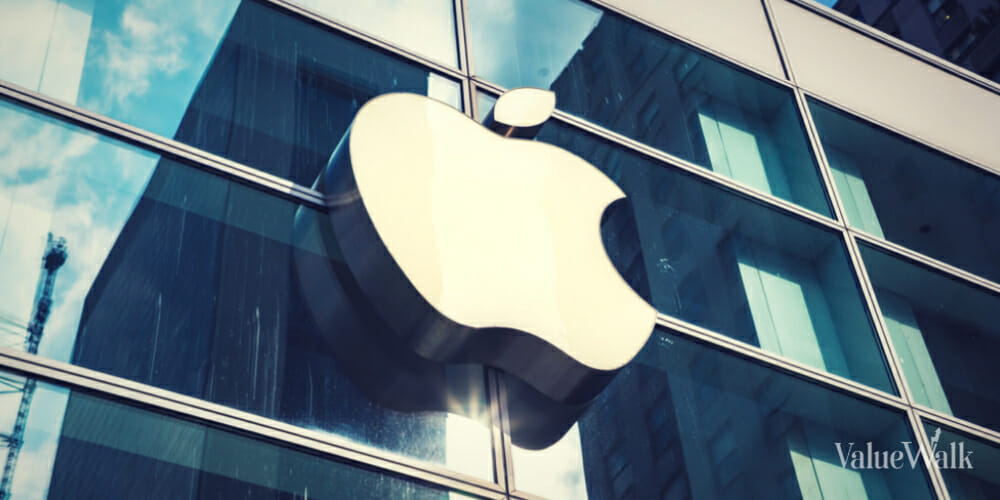While other household names in Silicon Valley have made mass layoffs in recent months to curb rising costs amid uncertain economic conditions – iPhone maker, Apple (NASDAQ:AAPL), remains one of the last remaining big tech companies that have yet to announce plans to slash its headcount.
In recent months, big tech names including Amazon (NASDAQ:AMZN), Google (NASDAQ:GOOGL), Meta (NASDAQ:META), Microsoft (NASDAQ:MSFT), PayPal, Spotify (NYSE:SPOT) and recently Dell (NYSE:DELL) have all laid off thousands of employees as a way to lower expenses and stabilize financial performance as costs climb and aggressive interest rate hikes hurt consumers and businesses.
Q4 2022 hedge fund letters, conferences and more
There have been more than 95,508 tech job losses this year alone. Last year, multinational tech companies slashed close to 160,000 tech jobs, as consumer spending slowed against the backdrop of higher inflation and ongoing macroeconomic problems.
As of 2022, around 1,352 tech companies have laid off employees in the face of growing financial constraints due to inflation worries and central banks hiking up interest rates.
With the risk of a possible recession looming on the horizon, Apple remains one of the big tech names out there that still hasn’t announced the possibility of cutting its headcount or temporarily laying off employees at retail levels.
In recent weeks however, an email surfaced on AppleInsider, that the iPhone and iPad maker has started laying off some of its non-seasonal employees in retail outlets outside of Apple Stores.
Apple is likely to cut non-seasonal employees in places such as Best Buy and will look to hire more seasonal workers that can help as demand starts picking up again during peak retail periods.
With so much uncertainty in the air, and economic conditions tightening consumers' purse strings, many are wondering how did Apple manage to stay off the list of big tech employers that have been slashing tech jobs at stratospheric rates?
Modest Headcount Growth
During the height of the pandemic back in 2020, tech companies and startups enjoyed impressive growth as demand for tech products and services from consumers and businesses took off heavily.
As demand soared, companies managed to tap into lucrative venture capital investment deals and cheap borrowing to help them expand.
With growing consumers and business interest, tech companies went on a hiring spree, doubling their headcount in a matter of months. Amazon, which recently laid off more than 18,000 employees, doubled its headcount between Q3 2019 and Q3 2022. Alphabet bumped up its headcount by 64%, while Microsoft grew by 50% during the same period.
By the end of 2022, Amazon had more than 1.5 million employees globally, while Alphabet was sitting with 186,000 employees, and Microsoft 221,000 according to the companies’ securities filings.
Apple on the other hand took a more modest approach, growing its business by a mere 20% over approximately the same time. By the end of last year, the smartphone maker had about 164,000 full-time employees.
So, while rivals in Silicon Valley went on hiring sprees, and attracting top talent with big salaries and other workplace perks and benefits, Apple remained prudent despite seeing above-average growth during this period.
Now with most, if not all pandemic-related restrictions evaporated, and the demand for digital services scaling back, alongside four-decade high inflation, and degrees of over-hiring taking a pinch into tech companies’ bottom-line performance, the money that was once there has now seemed to disappear.
To counter unsustainable business models, and excessive hiring and onboarding, companies soon embarked on mass layoffs, hiring freezes, and postponed job openings until they were out of the woods. But the time for that has come and gone, and many are certain that even more layoffs are on the books for the tech industry this year.
Limited Employee Benefits
When the severity of the pandemic spread across the world, multinational firms and tech giants were some of the first to announce remote working for most, if not all of their employees.
During this time, some companies, including Google as per CNN reports, were one of the few that allocated $1,000 home-office stipends to employees and other work-related benefits to help them ease into the virtual workspace.
Back in March 2022, Facebook parent company, Meta, announced that it will be scaling back some employee perks and benefits, since adopting a hybrid working model. Some of the benefits that did not cut were free laundry, dry cleaning, and valet services.
On top of this, the company announced that it will delay its daily free dinner by half an hour from 6 p.m. to 6.30 p.m. This delay meant that some employees had to choose between either getting a free dinner or a free ride home, as the company’s last shuttle for the day departs at 6 p.m.
Unlike its other big tech competitors, the Cupertino-based Apple company remained complacent to offer its employees fair and equal employee benefits that support their employees' well-being, productivity, and performance, even though economic challenges started to present themselves.
Apple managed to recognize employee needs in the workplace, and provide them with monetary and non-monetary benefits that would improve their overall company loyalty, yet wouldn’t deter them financially.
Even Apple chief executive Tim Cook has seen his annual compensation package being slashed by more than 40% after a recent stakeholders meeting and approval from Apple’s compensation committee to award Cook with “target compensation” of $49 million for 2023.
Still a hefty paycheck, but after Apple shares fell sharply last year due to economic slowdowns and ongoing supply chain issues, the compensation committee re-evaluated Cook’s salary to help further stabilize the financial conditions of the company.
Steady Consumer Demand
Rising prices, tight labor market conditions, and supply chain issues have caused some tech manufacturers to raise prices for their services and products.
The consumer price index (CPI) which ended December 2022 at 6.5% was still lower than the 7.1% recorded in November 2022.
Despite inflation cooling, aggressive monetary tightening has led to record-shattering interest rates. At the start of February, the Federal Open Market Committee (FOMC) bumped rates by 0.25%, bringing its target range to 4.5%-4.75%, the highest since October 2007.
These and other macroeconomic conditions have led to severe price increases across the board, with companies passing inflationary costs onto consumers.
At the same time, prices kept moving north, and manufacturers in China announced a slew of production freezes, Apple remained steadfast to stay on par with its production projections.
In 2022, the tech giant told assembles to make 90 million of its newest devices, even as the consumer market dwindled. The company expected to release more than 220 million new iPhones in 2022, the same amount as the year before.
Keeping assembly lines busy wasn’t the only thing Apple did to help boost enthusiasm. Last year Apple released its newest iPhone model, the iPhone 14, and prices started at $799 per device, roughly the same amount users paid for the iPhone 13 in 2021. This however was only the case in the U.S., where a majority of its users are concentrated.
Instead, Apple took advantage of the stronger dollar and currency exchange rates, raising prices in markets like the U.K., Germany, Australia, and Japan.
Prices for the base iPhone 14 model in the U.K. increased by roughly $80 more in 2022 compared to the price of the iPhone 13 in 2021.
Even with higher prices, the iPhone maker managed to weather the downturn, as the company reported sales grew 8% year-over-year according to its most recent earnings report. Although revenue was down by 5% YoY to $117.2 billion, the first such decline since 2019, the tech giant has remained optimistic about the road going forward.
There Are Challenges
Unfortunately, not everything is without calamity in the world of Apple and Tim Cook, as some persisting issues could hurt the company’s performance in the coming months.
For starters, Apple is facing threats of antitrust allegations in the U.S. and the European Union. The company came under scrutiny, after allegations surfaced saying that Apple was using its market dominance to fend off competition from rival payment apps, and charging card issuers higher fees to help bump up its revenues.
The Department of Justice has since been investigating the allegations, and developments of the lawsuits are still ongoing.
Then there are supply chain issues at some of the company’s biggest plants in China. During the later months of last year, China reinstated its Zero Covid policies and forced millions of residents back into lockdown as Covid-related cases exploded.
Assembly plants in the Zhengzhou region of China saw law enforcers clamp down on residents, sparking outrage between civilians and law enforcement leading to plant closure for several days. Though conditions have since improved, and lockdown measures eased, this came at a critical time for Apple as the festive period was around the corner.
According to market research by Canalys, global smartphone shipments decreased by 18% in Q4 2022 as higher prices caused by inflation and supply chain issues grew increasingly serious.
Conclusion
With ongoing recession talks and economic conditions further deteriorating, many are suspecting that Apple could announce some layoffs in the coming months, yet it’s not certain how many jobs the company would be looking to cut from its books.
While the company has kept performance steady in terms of its sales, and managed a more moderate approach to its growth over the years, these management tactics have helped it stay off the list of big tech companies that have slashed thousands of jobs in recent months. The question remains: how long will Apple be able to fend off layoffs as economic pressure squeezes consumers and businesses?













